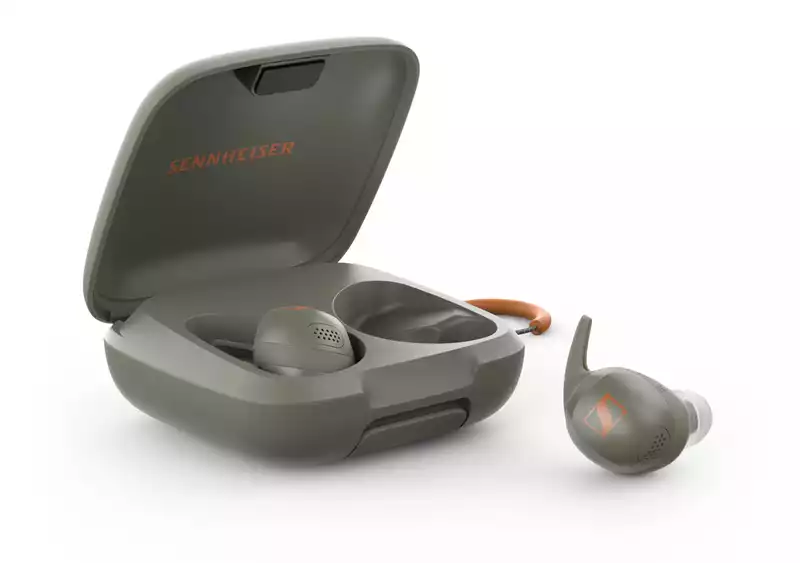The Consumer Electronics Show, known as CES, is underway in Las Vegas this week, and while the halls are filled with transparent TVs (seriously), flying surfboards (also true), and, well, AI built into everything, our attention was caught by Sennheiser 's new trio of wireless earbuds.
Of the three new models, it was the Sennheiser 4 Momentum Sport that piqued our interest the most.
According to the brand, each earphone has a built-in photoelectric (PPG) heart rate sensor. This is defined by the National Institutes of Health as "a simple, low-cost optical technology that can be used to detect changes in blood volume in the microvascular bed of tissue," which essentially means it uses the same technology as the optical heart rate sensors in smart watches.
As for the built-in body temperature sensor, the details of the technology driving it are less clear.
Sennheiser states that all data collected by the headphones will be sent to Apple and Garmin smartwatches, Apple Health, Garmin Connect, and the ecosystem of Strava, Peloton, and Polar's Biosensing Flow app.
The company stated.
Given the obvious risks of wearing headphones while riding outdoors and the widely accepted inaccuracy of wrist-based optical sensors compared to chest straps, this idea is unlikely to replace the chest strap. However, it could be an interesting two-in-one solution for indoor cyclists who ride indoors while listening to music on apps such as Zwift. Priced at £259.99/€329.99, it doesn't save much over buying them separately, but it does reduce the number of Bluetooth signals you need to connect (many devices have limitations) and reduce the number of devices you need to remember to charge.
The benefits could be fruitful. I am not a medical expert, but given that practitioners have been using ear thermometers to measure body temperature for centuries, it is not too much of a stretch to believe that this could work.
In recent years, there has been a growing understanding of the correlation between trunk temperature, heat acclimation, and cycling performance; various teams, including Ineos Grenadiers, have been experimenting with the use of the CORE temperature sensor, a small sensor that hooks onto a heart rate strap and is worn on the rib cage
The CORE temperature sensor has been used in a number of studies.
There has been a surge in the number of professional teams using heat acclimatization and monitoring trunk temperature to aid performance, as well as the enthusiasm of riders to lower their trunk temperature when warming up for a race, for professional teams and those pursuing performance, This certainly seems like a viable option.
Of course, just like a traditional heart rate monitor or power meter, wearing a temperature sensor does not immediately make you faster, but the information it captures can certainly help in the pursuit of marginal gains.
Sennheiser has a reputation for sound quality, and since we're just cyclists, we'll defer to our friends at TechRadar for audiophile expertise, but we think it's safe to assume that the sound quality of this product is up to scratch.
Waterproof and dustproof to IP55, with an impact-resistant chassis and anti-clogging ear tips included, they run for 6 hours on a single charge, and the IP54-compliant case with USB-C port can be fully charged three times. This means up to 24 hours of playback while on the go. It also promises 45 minutes of playback on a 10-minute quick charge.
As mentioned above, it will be priced at £259.99/€329.99 (US$ TBD) and will be available on April 9 for those interested.


Comments